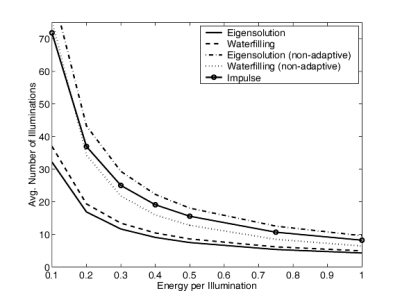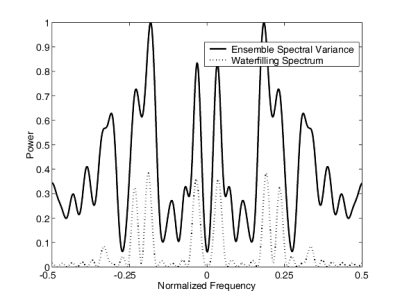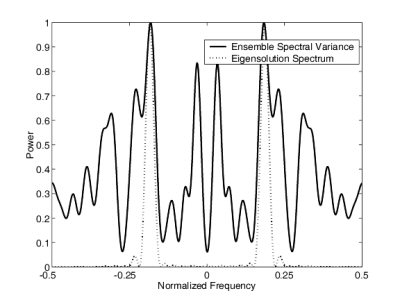Cognitive Radar
Effective sensor operation within complex environments requires adaptation via constant monitoring of interference, cooperation with other sensors, and optimized illumination waveforms. Although waveform design is always an essential part of the design of active sensors, there has been recent emphasis on new waveform techniques such as matched illumination, adaptive waveform control, and exploitation of waveform diversity capabilities such as spatial or polarization diversity.
Another newly proposed concept for optimizing the performance of active sensors within resource-constrained and interference-limited environments is cognitive radar. The goal of cognitive radar (CR) is to provide the overall sensing system with the capability to integrate (a) information about the propagation environment, (b) the capabilities and positions of other sensors, (c) input from external knowledge bases, and (d) system objectives and priorities. This integration will enable a cognitive radar system to decide on its next course of action including such tasks as re-positioning itself, requesting assistance from other sensors, and/or adaptively customizing an active waveform. CR operates in a closed loop. Within this loop, active interrogations of the channel are optimized based on prioritized system objectives, understanding of the propagation channel, and other forms of prior knowledge. With each illumination, the system's understanding of the channel improves in response to collected data and other information. It has been suggested [1] that the foundation for such a CR system could be a Bayesian formulation whereby many different channel hypotheses are given a probabilistic rating. As more information is collected, the parameters of the channel hypotheses and their relative likelihoods are updated. The goal of an illumination, therefore, is to efficiently reduce the uncertainty attributed to each channel hypothesis.
We are studying the integration of two technologies in an effort to demonstrate autonomous, closed-loop sensor operation. The first of these is related to the optimum design of waveforms for performing specific tasks such as target detection, tracking, or recognition within the Bayesian channel formulation. In order to accomplish this in a closed-loop manner, the system must have the capability to continually update its understanding of the radar channel while also being able to make firm conclusions when supported by the data. Such conclusions, such as a detection or identification, are necessary if the sensor is to provide actionable information. Therefore, the second technology area we are integrating is sequential hypothesis testing. When combined, waveform optimization and sequential hypothesis testing form a closed-loop system that is an example of the more complex closed-loop operation that we hope cognitive radar will eventually become.
In Figure 1, we show the results from a target recognition situation where there are four target hypotheses. The radar system transmits a waveform and measures the returns. Then, likelihood ratios are formed, and if any one hypothesis can be selected with sufficient confidence, the experiment is ended. If not, then the prior probabilities of the hypotheses are updated, and another transmission is made. Three waveform strategies are compared. The first is a fixed wideband pulse. The second is an information-based waveform that depends on the ensemble of channel hypotheses (in this case, the ensemble of target hypotheses), and the third is based on the eigenfunctions of the ensemble's autocorrelation matrix. Since the second and third strategy depend on the ensemble of hypotheses, as the probabilities associated with the hypotheses are updated, the waveforms adapt to reflect the system's current understanding of the experiment. We perform Monte Carlo Simulation to determine the reduction in number of transmissions that can be achieved through closed-loop operation with adaptive waveforms. In Figure 1, we see that the two optimized waveforms with adaptation provide a considerable performance improvement. The horizontal axis is the amount of energy allocated to a single transmission; thus, reducing the number of illuminations also reduces total energy used, which may be useful for sensor network applications.
Figures 2 and 3 show examples of the frequency spectra for the information-based and eigenfunction-based waveforms, respectively. They are compared to the ensemble's spectral variance, which is the variance of the target's frequency responses. Note how the eigenfunction-based approach tends to focus energy into one or two narrow bands while the information-based approach tends to spread energy into several bands.

Figure 1. Avg. number of transmissions for a target recognition application using sequential testing and several waveform strategies.

Figure 2. Example of an information-based waveform for a particular ensemble of channel hypotheses.

Figure 3. Example of an eigenfunction-based waveform for a particular ensemble of channel hypotheses.
